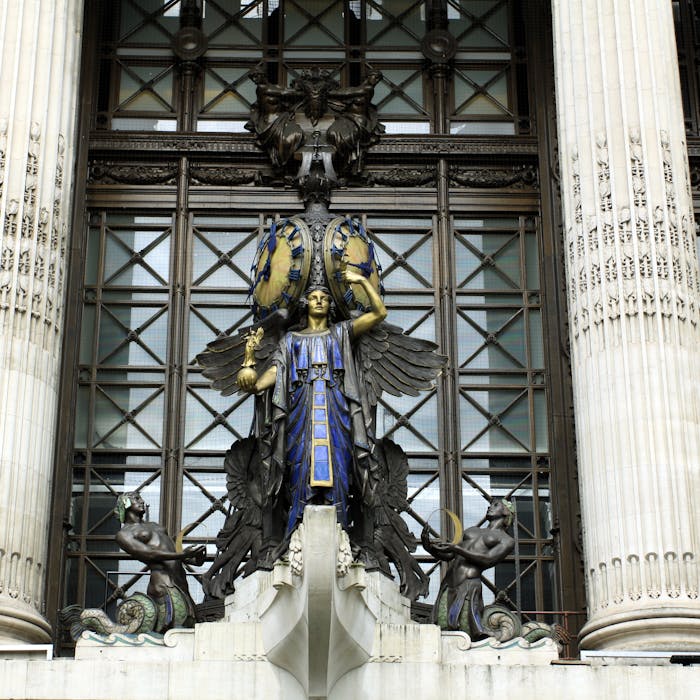
Selfridges - making a spectacle of shopping
Entrepreneur Harry Selfridge pioneered the concept of the department store in Britain with his grand flagship enterprise on London's Oxford Street (whose sculpture over the entrance is pictured), which is still the second largest shop in the UK - after Harrods. It opened on 15th March 1909.
An American, Harry Gordon Selfridge, invested £400,000 to build a new department store in what was then the unfashionable western end of Oxford Street, and then ran the store for 20 years. He had recognised a gap in the market since London did not have a department store to match those of America and Paris.
Much of the success of Selfridges was due to Harry Selfridge's astute marketing. He tried to make shopping a fun adventure and a form of leisure instead of a chore, transforming the department store into a social and cultural landmark that provided women with a public space in which they could be comfortable and legitimately indulge themselves.
Emphasising the importance of creating a welcoming environment, he placed merchandise on display so customers could examine it, moved the highly profitable perfume counter front-and-centre on the ground floor, and established policies that made it safe and easy for customers to shop. These techniques have been adopted by modern department stores around the world.
Harry Selfridge also planned exciting exhibitions and events within the store. In 1909, after the first cross-Channel flight, Louis Blériot's monoplane was put on display at Selfridges, where it was seen by 12,000 people. John Logie Baird made the first public demonstration of moving silhouette images by television from the first floor of Selfridges from 1 to 27 April 1925.
Selfridges is one of the few major department store enterprises to seemingly be able to survive into the 21st century with the recent demise of both national chains like Debenhams and regional ones like Binns and Beales.
Further reading
Links to external websites are not maintained by Bite Sized Britain. They are provided to give users access to additional information. Bite Sized Britain is not responsible for the content of these external websites.
